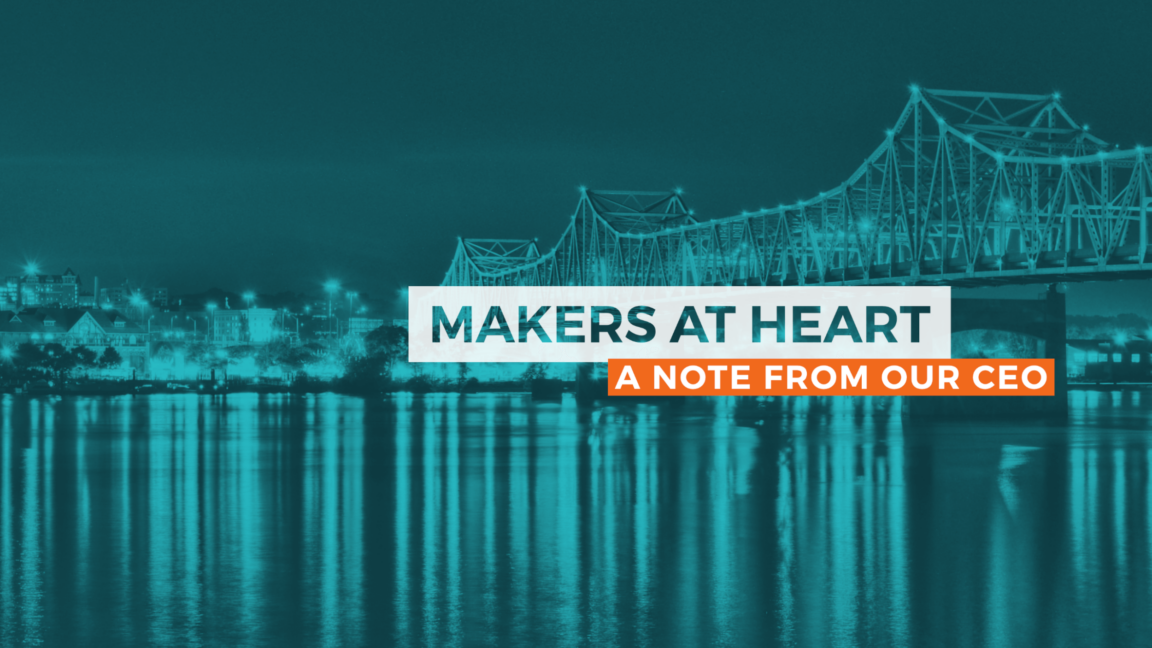
Late last week I was contacted by a reporter for The Atlantic who wanted to know more about the Peoria region. She was following up on a study that talked about changing voting patterns in “factory towns.” Though I’m a politics junkie, I know better than to go on the record about my thoughts on presidential elections. But we unexpectedly had a nearly hour-long conversation on Peoria being labelled a “factory town.”
At first, I sort of bristled at the idea. That reaction was not out of shame of the label or fear that we would be stereotyped in a certain way in her article. Rather, I had to think hard about our manufacturing roots and how our regional economy had changed. As you hopefully know, October is Manufacturing Month and we have had much to celebrate in Greater Peoria over this past month. Our region has long been considered the earth moving capital of the world and being the hometown of Caterpillar is a badge worn with pride. In the 1960s and 1970s, Peoria might have rightly been called a “factory town” in the same way many Midwest communities were dominated by a major employer. But are we still?
While the region’s economy has diversified over the past few decades, we can never lose sight of the importance of manufacturing as a foundational element. Manufacturing businesses and employees underline the rest of our local economy: retail, banking, education. Even the healthcare sector — now our largest industry in terms of employment — recognizes this. Healthcare is ultimately a service industry and relies heavily on our manufacturing businesses and workers for the provision of this service.
The good news is that manufacturing is alive and well in Greater Peoria. Over 20,000 people work in the manufacturing industry. The jobs span from assembly to machining to engineering and require anywhere from a welding certificate to a doctorate degree. Though Caterpillar is still the dominant manufacturing employer with around 12,000 local employees, there are dozens and dozens of other companies that are working in this industry. We have large employers like Komatsu and Liberty Steel, smaller companies like Metamora Industries and Quality Metals, and a whole universe of companies who support the manufacturing industry like G&D Integrated and Tada. And while heavy metals are at the base of this part of our economy, we make lots of other things, from foil yogurt lids to sunglasses to vegan leather.
Our local workforce system is a big part of the manufacturing scene, too. On Thursday, Illinois Central College will break ground on a $12 million Workforce Sustainability Center which will help train tomorrow’s manufacturing workforce. Bradley University graduates some of the country’s best mechanical engineers, many of whom find jobs in both large and small local companies. The annual Career Spark event seeks to expose our youth to a wide range of careers in the region, and some of the most popular sections (both in-person and virtual) are the manufacturing ones. Finally, the Regional Workforce Alliance and GPEDC are joining forces to apply the Talent Pipeline Management system to better align our workforce system with the needs of employers. The manufacturing industry is the first to get this treatment.
Maybe Peoria isn’t a factory town in the traditional sense, but that does not mean we should hide the importance of manufacturing to our economy. It is great that our region has diversified — that has made us stronger and more resilient. But at heart, we are still makers.